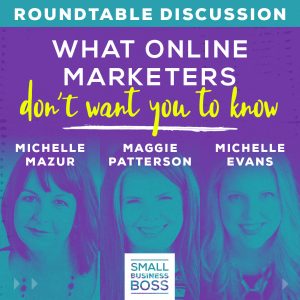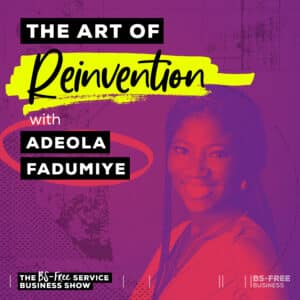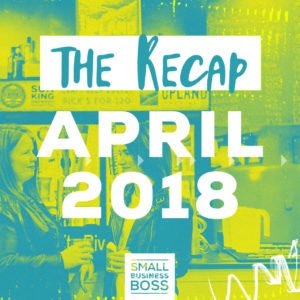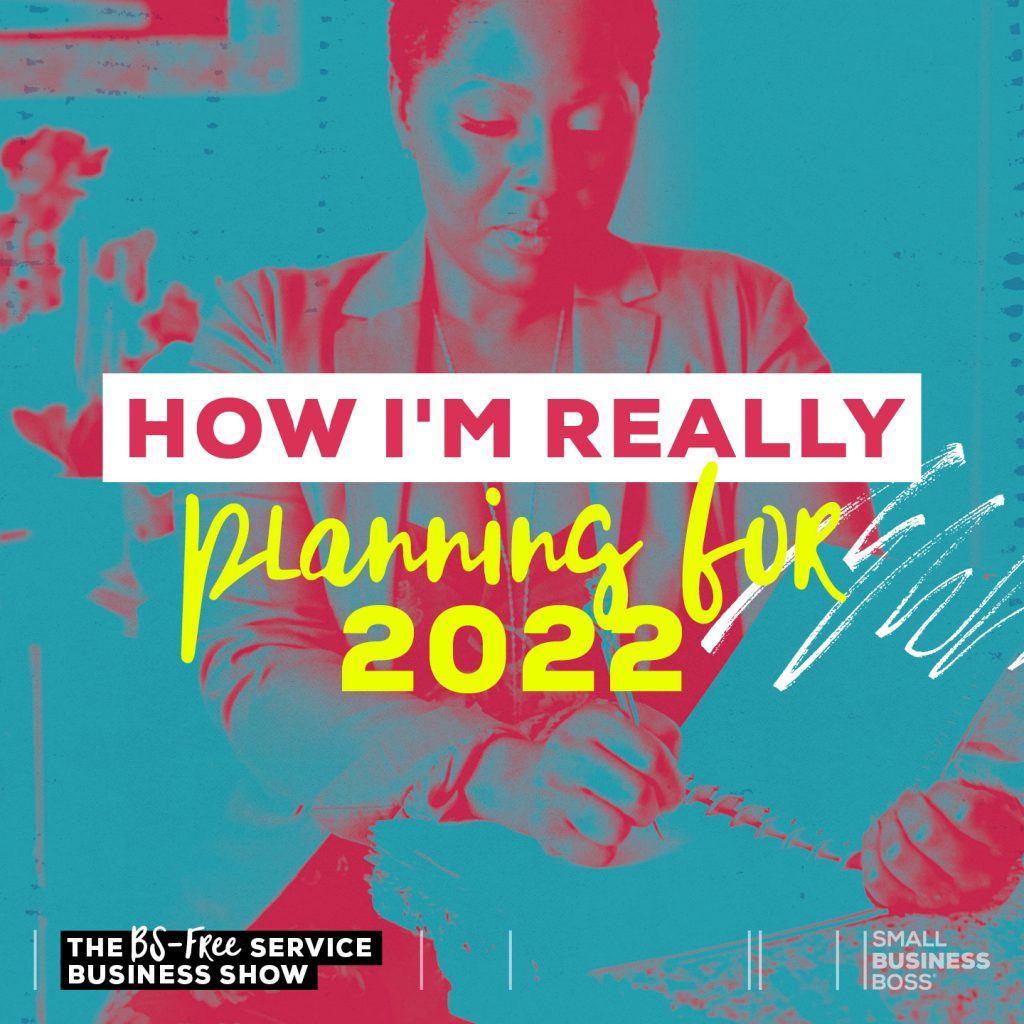
Search the site:
How I’m Really Planning for 2022
There’s something that happens at this time of year right before the holidays where the pressure to plan gets amped right up. And as much as I love planning, I don’t love this ridiculous and arbitrary demand on me that I must plan now. In this episode, I’m sharing how I’m really planning for 2022 to give you a real-world perspective amid the end-of-year planning frenzy.
Now, if you know me. You know I’m a planner. I love a plan. I love to organize. I have a labeler and I’m not afraid to use it. (Just ask my family.)
So you’d think that I’d be easily swept up in the “plan your best ever ever” extravaganza that goes on at this time of year. I mean, I’m a person who loves office supplies and planners and having the perfect highlighter.
I don’t know if it’s the cumulative effect of the last two years, or my rebel nature kicking into full force, but how I think about, and actually do the planning, has evolved.
Maybe it’s the fact that I’ve come to realize that planning is literally an industry onto itself, and that celebrity entrepreneurs have a vested interest in pushing a narrative that tells us we must plan so they can sell to us.
My Relationship with Planning Has Evolved
In the last few years the tension I feel around planning, and the expectation of planning, has increased every single year.
I’m not going to tell you not to plan. You want to plan. Go for it. Just be clear on what you’re planning, and don’t set yourself up to feel bad later on in the year.
Because that’s been a big part of realization for me. So much of what the conventional wisdom is around planning is around aspiration, and that doesn’t really work for me. I’m more of a let’s get shit done, action kind of person.
So my planning needs to be rooted in specific actions, not visions or fluffy future states. Not that I think those things are wrong, but rather, it’s not how my brain works.
In StrengthsFinder four of my top five are in the strategy realm, which means strategy and thinking inform my decisions. And my last one, it’s about executing, so it makes complete sense that I’m not really here for the aspiration.
There are a few other things that have happened along the way which have made me recognize that I can plan as much as I want, not everything is in my control. 2018 was a dumpster fire of a year on a personal level, and then this whole pandemic thing has forced me to not to try to hold so tightly to the plan.
The other realization I’ve come to through all of this is that trying to plan too much at this time of year is beyond my capacity. Like many people, I struggle in the winter months with Seasonal Affective Disorder, so by the time I get into January and February, I need to be mindful of my energetic and emotional capacity.
While I’ve got my SAD in check, I believe a big reason the last few years have improved for me is that I didn’t push myself by having a beautifully colored-coded plan for the year.
It’s a great reminder of how we all have different cycles, and there’s no one time to plan. Any time is a good time to plan, and it’s a big reason I encourage clients to plan on a quarterly basis and not to expend energy worrying about Q4 2022 right now.
So you may be wondering…Maggie, I thought you were going to share what planning you’re doing, which is what I want to talk about next.
My Yearly Level Planning
While I’ve let go of trying to plan everything into perfect little packages and pockets of time for the entire year, I do some year planning so we have a clear direction.
This planning is all related to two main areas: money and time.
For time, I look at the full year and map out key dates which includes retreats for masterminds, vacations, and more. This helps me and the team get a rough idea of what’s on deck, how much capacity we have for things and so on.
To do this, I went old school and printed out an entire year’s calendar with one month per page. Then I went through and color-coded events, retreats, vacations, office closures and so on.
Having that has meant we could set schedules for our three masterminds, determine my time off (which is a lot for 2022) and figure out where any launches would be. It also meant I could pass off elements of managing my Calendar and my Calendly to the team and get me out of the mix on those.
This may seem basic, but you’ll notice that I did my vacation part first. I looked at my life and nailed down what I need time off for. I have a pretty big year coming up with a milestone birthday, a kid graduating high school and going to university and hopefully a return to travel. I need space to ensure those things happen for us as a family, and the business needs to work around them.
So many times we skip that part and then decide where life comes in. So if you’re not looking at your vacation schedule/time off for the year, that’s one really specific action you can take now to protect your time.
The other part of the yearly planning is around money. I won’t get too into the details on this, but having high-level money plans helps guide decisions for the year.
The key elements of my money plan are a budget (which includes a compensation review of salaries and contractor rates), as well as a revenue forecast. Those two items work in conjunction all year long to determine our offers, pricing, marketing plan and more.
It is worth noting that one thing we’ve done consistently is base the budget on the previous year’s revenue. That means I’m not spending money speculatively, and if there’s anything that depends on a specific revenue goal being met, they’re included as something with a dependency on that money being made.
I’ve reached the point business-wise where I don’t spend money that’s not already made thinking it will help me make more money. That’s rarely worked out for me, and frankly, I’m over it.
Notice what I’m not doing? There’s no big vision board or intangible tasks. I’m not worrying about aspirational and visionary-type things. Those things may happen in the spring for me, or they may not. I like to see how the first 60 to 90 days pan out and go from there.
If you want to do aspirational type planning and work on vision and have fun with it, go for it. Just be clear on why you’re doing it, and not get trapped into the idea that you have to do anything, or wasting time on activities that are simply procrastination. (More on procrasti-planning in the BS-Free Planning workshop which you can get here for free.)
Quarterly Planning
If you’ve listened to this show for a while, you know I’m a diehard quarterly planning fan and it’s something we talk a lot about in our programs.
Before I dive into this. Quarterly planning has been hands down the most helpful type of planning I’ve done in my business because I’m learning in real-time and then incorporating that information into the next plan.
My approach to quarterly planning is loosely based on the 12 Week Year, and it’s something I’ve created a workshop on for clients. I believe that planning as we’re taught to do it in online business overlooks the reality that we have limited time to work on our business as service business owners.
I’m sure many of you are familiar with quarterly planning, so I won’t get too far into the details, but instead share what I’m working through. Across the two businesses, my agency Scoop Studios and Small Business Boss, I’ll stick to a total of three major goals. Typically, for Scoop that’s a new client/lead gen related goal that may tie in marketing.
For Small Business Boss, we’ll have a goal related to the next enrollment for TrustDNA, The Lab, as well as a goal related to getting me out weeds on the operations side. In Q1, I want my energy for Small Business Boss to be focused on serving clients and creating content. I’m still too involved in some of the nitty-gritty ops things and I’m committed to working my way out of that.
That’s it. Three priorities, with a series of smaller projects or tasks underneath each one. I’ve learned from experience that more than that and I’m unfocused, and nothing gets done well.
Plus, I don’t have to deal with the emotional fallout, and disappointment of not hitting goals. I don’t expect to hit every single goal every single time, but now they’re realistic and achievable based on my capacity and other constraints.
Planning Without the Bullshit
As you think ahead to a fresh new year, this is your permission slip to plan your way, and if you need to chill for a bit and not plan, that’s okay too. So much of the narrative around planning is tied into trying to sell us something, and creating fear that if we don’t plan the best year ever we’re doomed until 2023.
If you do want to focus on planning in a way that’s strategic and skips all the BS, check out BS-Free Planning, which is a free private podcast with five episodes. It walks you through the things that actually matter planning wise for you as a service business, and in the first episode I share some of the ways planning goes off the rails for many of us.
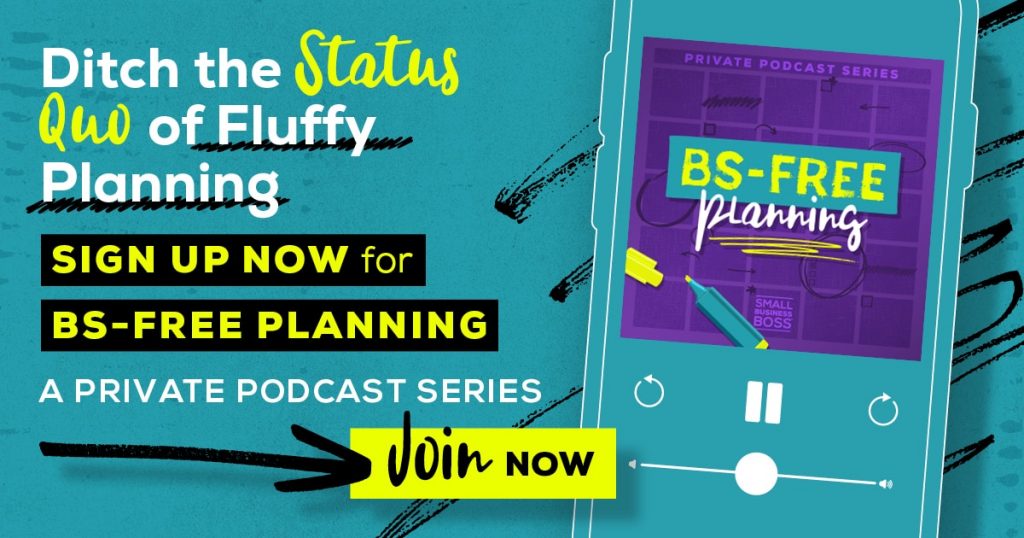
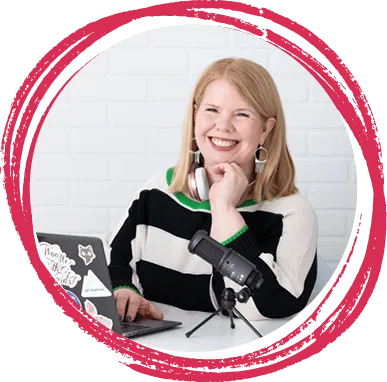
I’m Maggie Patterson (she/her), and services businesses are my business.
I have 20+ years of experience with client services, am a consultant for agency owners, creatives, and consultants, and vocal advocate for humane business practices rooted in empathy, respect, and trust.
Read or Listen to the Latest
For Solo Business Owners
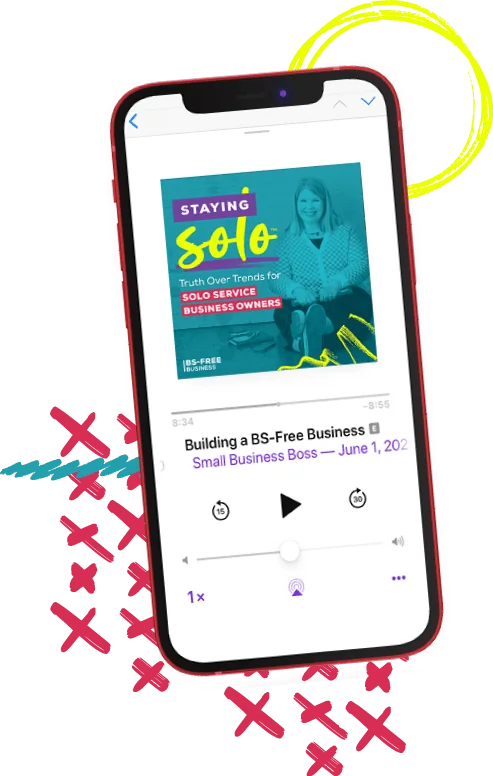
Growing a solo service business is tough.
It’s even harder when you’re bombarded with BS advice that steers you away from your values and why you started your business in the first place.
This is the podcast for solo creatives and consultants who want to remain as a team of one and have zero interest in the hustle and grind of typical business teachings.
Subscribe now and never miss an episode.
For Micro Agency Owners
Most podcasts for agency owners obsess over revenue growth as the ultimate success metric.
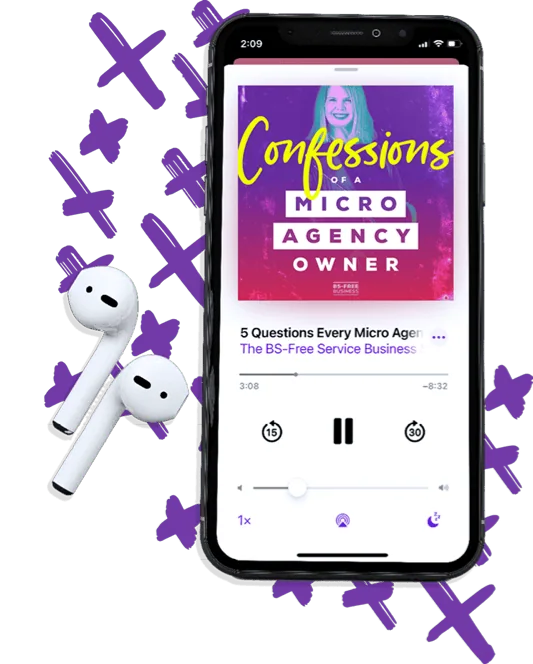
But here’s the truth: not everyone wants to make millions. Your goal might be to build a sustainable business that lets you have a life and doesn’t run you into the ground.
Join me as I spill my shameless confessions and share everything I’ve learned about building a micro agency that skips the BS of tired and typical agency teachings.
Follow Now on All Major Podcast Platforms


